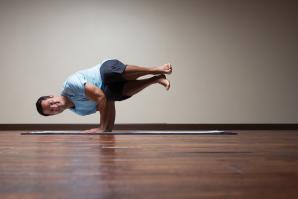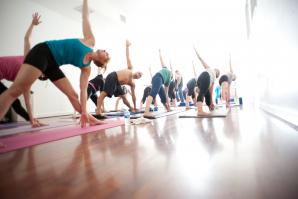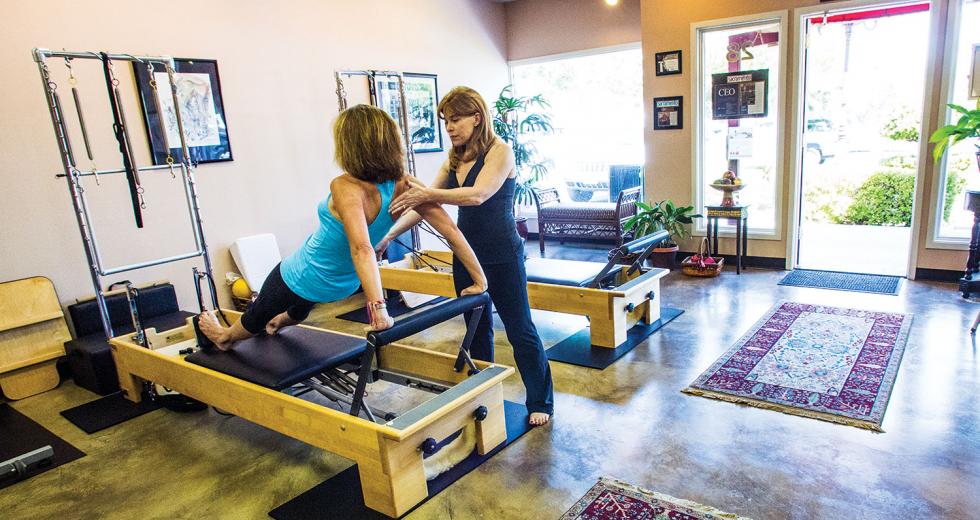When Kelly Sassman started giving Pilates instruction at her Sacramento studio 12 years ago, people couldn’t even pronounce the name of the fitness program.
“They would call and ask what was ‘pilots,’” she says, laughing.
Sassman now has a waiting list for customers wanting private training sessions in Pilates (pronounced pi-lät-ez), an exercise method focused on core strength, flexibility and mental clarity. She sees more serious athletes in her studio, along with aging baby boomers trying to stay fit and 20-somethings with residual sports injuries.
It adds up to an explosion of interest in the once-mysterious program and some divergent philosophies within the ranks of instructors and participants.
“My business has grown 35 to 40 percent since 2005,” Sassman says. “It leveled off during the downturn but never fell off. I think Pilates in the region will continue to grow.”
The local spike in Pilates’ popularity as a mainstream fitness regime mirrors nationwide growth. In 2010, Pilates was the nation’s fastest-growing fitness activity, with 8.6 million participants, up more than 450 percent since 2000, based on the most recent report from the Sporting Goods Manufacturers Association.
The number of participants is down slightly from a mid-decade peak of 10.5 million participants in 2004, but trends point to a steady growth, while several other mind-body formats are losing steam.
The American College of Sports Medicine ranked Pilates in its top 10 trends for 2010, along with core training and functional fitness.
“Pilates reaches a wider audience now because there’s so much more information on its health benefits,” Sassman says. “Physicians and physical therapists are starting to refer patients to Pilates. Some people are getting into Pilates to rehab or to get into shape after being out of a fitness program for a while. It’s a good starting point.”
But with the expanded audience comes controversy about safety, certification of trainers and method authenticity. As demand increases, more programs are cropping up in general fitness centers, and equipment companies are selling Pilates apparatuses for home use.
The meteoric climb of Pilates has split the exercise community into two camps, the “classical” and the “contemporary.” Classical supporters advocate for Pilates in a “pure” environment for mind concentration, saying the method isn’t conducive to noisy group settings in fitness clubs. They want Pilates to be practiced the way its inventor, Joseph Pilates, intended.
But practitioners in the contemporary camp believe Pilates can be adapted for group settings in general fitness studio formats and combined with other exercises to form hybrid programs more accessible to the general public.
Ken Endelman started making Pilates equipment in 1976 in Hollywood and moved to Sacramento in 1980. Today, his business, Balanced Body, is one of the world’s largest providers of Pilates equipment and education, with 23 U.S. patents on equipment and sales in 150 countries.
“There are those who believe Pilates should only be practiced as Joe would have when he died in 1968, at the pinnacle of his career,” Endelman says. “But Joe was continually evolving, he was an innovator. I think he would approve that we keep building on his work.”
Instead of worrying about how the founder practiced and taught the program, Endelman says he prefers to concentrate on getting people hooked on an exercise program.
“My goal is to improve people’s lives as much as I can,” he says. “If they get off their butts and move, their life will be better. It doesn’t matter if it’s exactly how Joe did it or not.”
Endelman also discounts criticism that Pilates equipment is dangerous for use by the general public. With proper training and use, Pilates apparatuses — including the Reformer (a gliding platform with springs, straps and pulleys), trapeze tables and a variety of chairs and barrels — are safe for resistance training.
“Anything you do incorrectly can hurt you, and Pilates is no different,” Endelman says. “Pilates is probably much safer than basketball or tennis. When you think of the number of people doing the exercises and the number of injuries, you see how safe it is. It’s extraordinarily rare that anything happens.”
Sassman agrees Pilates equipment is generally safe, but cautions that some clients need increased supervision.
“You don’t want to put an elderly person on a trapeze table if they’re not steady because that can be an unstable piece of equipment,” Sassman says. “It could be a recipe for disaster. So I wouldn’t call the equipment dangerous, but sometimes it requires a trained instructor to guide you through it. The instructor needs to be trained in how to set up equipment and spot people.”
Heidi Wagner, 55, of Sacramento, says large Pilates classes in health clubs can be “diluted.” Wagner has had both knees replaced, and suffers from arthritis and stenosis. Five years ago, she was facing life in a wheelchair when she started doing Pilates, and she now is undergoing certification to become an instructor.
“My body is in great shape, it’s very fit,” she says, crediting her quality of life to Pilates. “It’s amazing what I can do now. It’s not magic but just working on the body in a controlled way.”
Wagner has taken group classes but believes in limiting the size to roughly eight participants and recommends private instruction for the best experience.
“The problem with fitness clubs is, you might have 30 people in the room with different abilities, ages and levels,” she says. “The instructor can’t watch everybody, and the more people you’re teaching, it ups the risk of injury. Large classes can’t be purely Pilates. They serve a purpose of getting people involved in exercise, but if you’re not engaging the muscles correctly and incorporate breathing, you won’t get as deep an exercise.”
Key to any Pilates session is the quality of instruction, Endelman says.
“Instructor certification has changed a lot, and the types of training for instructors vary,” he says. “Some are one-day workshops, others take months. You can get so much more from someone who’s taken a longer course.”
Recommended For You

Hurts So Good
Yoga is good for you, but be careful boys
I’ve always snickered at yoga.It just seemed ridiculous. But men are flocking to yoga the way we once, in the ’80s, took to this thing called “jogging.” We’re learning that yoga bestows a slew of health benefits — physical, mental, even sexual. But new research also points to increased health risks for men, and this muddies the decision.

Juiced
Bowel Formula No. 2, friend or foe?
It’s a seductive pitch: Cleanse your body. Feel healthy. Lose weight.
You only have to do one thing: starve.

Posed for Growth
Sacramento's yoga market thrives
In a Thursday morning’s darkness, the hardwood floor of Yoga Shala is covered wall to wall in rubber mats. Seated, students center their breath as instructor Tyler Langdale begins the Vinyasa class.



